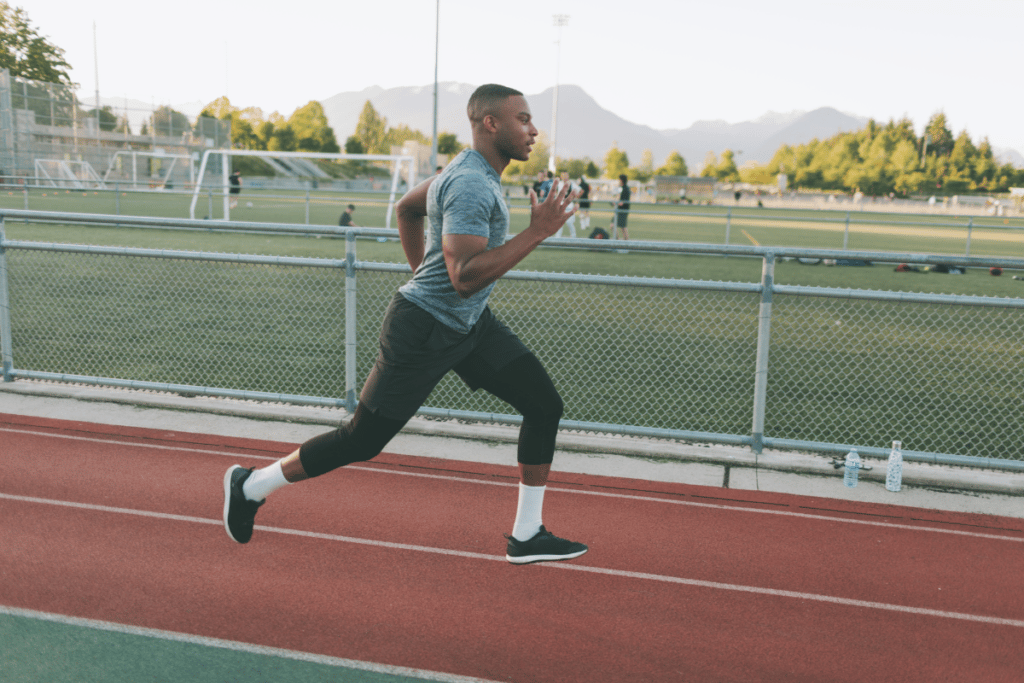Should You Run and Lift Weights on the Same Day? (6 Pros and Cons)
For as long as I can remember, I’ve loved running and lifting weights. Attempting to build muscle while training for a half-marathon presents a formidable challenge. Runners and weight-lifters alike can benefit from performing both resistance training and cardio since they complement each other quite well. That said, should you run and lift weights on the same day? Or should runners be weary of overexerting themselves?
Running and lifting weights on the same day is perfectly okay. The total volume is equivalent regardless of how you structure your workout regimen. However, if you choose to run and lift on the same day, you should prioritize one exercise over the other to structure your workout plan properly.
Read on to learn whether or not you should run on lifting days, the pros and cons of running and lifting on the same day, and how running and lifting affect body composition.
Should you run on days you lift weights?

If you’re determined to balance running and weight lifting, you’re probably wondering the best way to do so. Is it best to run and lift on separate days, or should you run and lift weights on the same day?
Whether or not you run and lift on the same day depends solely on personal preference. There is no glaring difference between running and lifting on separate days or the same days, save for the possibility of overtraining. Do what works for your schedule and fitness goals.
Numerous studies claim that running and lifting weights on the same day is counterproductive because the overall gains are minimized. The basis of this claim is that if they lift weights first, athletes are tired by the time they run. If they run first, they’ll be tired when the time comes to pump some iron.
While this is true, this doesn’t mean you need to avoid running and lifting on the same day. Runners and weightlifters alike will still reap fitness benefits from both exercises, even if they perform both on the same day.
Being informed is important. You still benefit by performing cardio and weightlifting on the same day, just not as much as if they are separated.
This knowledge, however, emphasizes the importance of structuring a workout. The order in which you run and lift is important; whatever the priority is should be performed first while you have the most energy.
Before structuring your workout regime, ask yourself; what is your goal? Are you an athlete training for a specific target time, or are you simply trying to lose body fat? This changes training plans immensely.
Since it truly does boil down to personal preference, here are the potential benefits and drawbacks of running and lifting on the same day!
Potential benefits
- Good for burning fat
- Efficient use of time
- Allows for entire rest days
Potential negatives
- Less response to stimulus
- Possibility of overtraining
- Second exercise may get neglected
Does running after lifting make you lose muscle?
I’m sure at one time or another, all of us have heard that cardio kills your gains. Is there a true basis to this, or is it simply propaganda pushed by the bodybuilding industry?
No, running after lifting does not make you lose muscle. Cardio will not kill your gains unless you decrease your strength training to increase your cardio. If balanced correctly, running and weight lifting are perfect complements that give recreational athletes a multitude of health and performance benefits.
Cardio killing your gains is basically a myth. In some scenarios, moderate cardio may actually further facilitate muscle building.
However, if you decrease strength training to perform cardio, there is a good chance your muscle mass will decrease because it is no longer receiving the necessary stimulus for growth. So should you do cardio and weights on the same day?
The trick is to balance running and lifting weights rather than dropping one for the other. A moderate amount of each will allow athletes to build muscle while maintaining good cardiovascular health. If you find yourself both running and lifting 6 days a week, you might want to tone it done a bit.
Another important aspect is diet. Athletes who both run and lift weights need to consume sufficient calories and protein to maintain muscle mass and fuel for workouts.
Does running after lifting burn fat?

For active individuals looking to lose weight, is running after lifting a good option to shed excess fat?
Yes, running after lifting is a highly effective way to burn excess fat. While lifting increases resting metabolic rate, running actively burns calories. Combining lifting weights and running is the best way to ensure athletes will burn fat.
Depending on certain physiological factors such as weight, age, muscle mass, body fat, and weight, every person burns a certain amount of calories in a sedentary state. This is called a resting metabolic rate (RMR). There is no accurate way of measuring RMR, but on average, men will need roughly 1,600 calories per day, while women will need around 1,400 calories per day.
By lifting weights, we can increase our resting metabolic rate. A study concluded that by lifting weights, resting metabolic rate is increased by a whopping 7%!
This means that even though lifting doesn’t burn many calories during the exercise itself, individuals who lift weights burn 7% more calories than those who don’t.
Couple this with running, and the results are promising. Running is an aerobic exercise, so while being performed, it burns many calories. Of course, the calories burned will still depend on the time spent running and the runner’s physiological factors.
Whether runners choose to run before or after lifting weights is negligible in terms of calories burned; it comes down to priorities and preferences. By lifting weights and running, those looking to lose weight can increase their resting metabolism and burn a few extra hundred calories. It is a recipe for success!
Is 20 minutes of running enough after lifting weights?
Many recreational athletes take up running to burn excess fat. A common way to structure workouts is to lift weights and then perform cardio to finish the workout.
The question that arises is, how long should you run after lifting weights to see significant change? Is as little as 20 minutes enough to make a considerable difference in body fat?
Yes, 20 minutes of running is enough to burn body fat as long as athletes are consistent. In 20 minutes, athletes can burn between 150 and 300 calories. Compounded, this can foster significant fat-burning and positive body mass index results.
As with all fat-burning, losing weight and subsequent fat comes down to placing yourself in a caloric deficit. Runners must burn more calories than they consume to lose weight.
Luckily, running is an excellent exercise to burn fat because it burns a substantial amount of calories quickly. In 20 minutes, the average runner will burn about 150 to 300 calories. The exact number depends on numerous factors like weight, age, speed, etc., but the golden rule is around 100 calories per mile.
1 pound of fat is 3,500 calories, so runners could potentially lose a pound of fat from running 20 minutes within two weeks. Good news, right?
However, there is a caveat. Runners must be consistent in running 20 minutes after they finish lifting weights. It’s very easy to rationalize skipping cardio if you’ve worked hard lifting weights; I myself frequently fall victim to this.
For runners who consistently run 20 minutes after lifting weights, there is massive potential to improve their body composition!
Is running before or after lifting better?

For runners attempting to balance lifting weights and running, the most common question is how they should structure their workouts.
Is it better to lift weights first, or should they run first instead?
It depends on every individual’s goals. For athletes prioritizing building muscle and strength over running, lifting weights first makes the most sense. Running first is the better option for athletes who want to improve their running endurance over strength.
Athletes should structure their workouts based on their priorities. If lifting weights is the priority, lift first. If running is the priority, run first.
This structure is effective because athletes can expend the most effort on the exercise they perform first. For example, if a runner lifts weights before running, they’ll have little to no energy by the time they complete the cardio portion of their workout. This is counterproductive as runners typically rely more on their cardiorespiratory endurance.
To reap the most benefits, prioritize and perform the higher-priority exercise first so you can allot the most energy to the most important workout.
What is a good running and lifting schedule?
Your running and lifting schedule depends on your goals. If you want to burn calories, it might be best to lift weights, followed by a run 4-5 days per week. However, if your goal is to train for a particular race, any weightlifting should be done on days you aren’t running.
Can I do cardio and strength on alternate days?
This is the recommended pattern for lifting and running, though there are some cases where doing both on the same day may yield better results.
Should I do my running before leg day?
If you want to maximize your lifting potential, it’s generally not a good idea to run before leg day.






